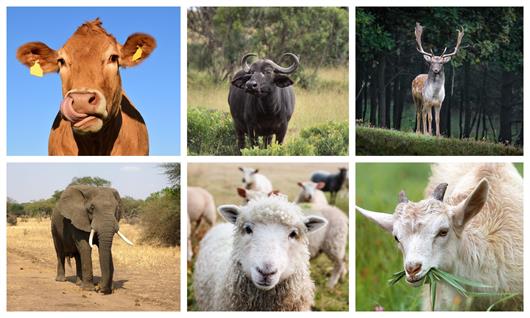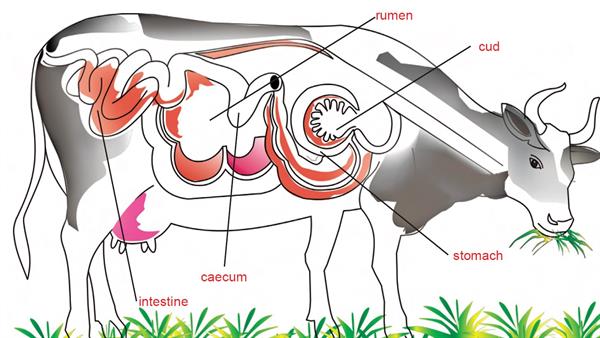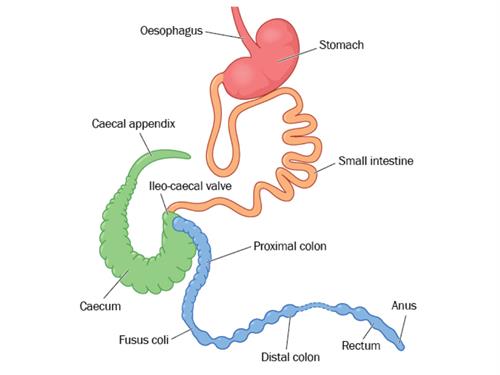PDF chapter test TRY NOW
As you have already studied in the previous class, unlike plants, animals cannot prepare food on their own. Animals always depend either directly or indirectly on plants for their food. Since animals cannot prepare their own food, animals are called consumers.
Different animals eat different kinds of food. Animals are classified into three types based on their food habits. They are:
- Herbivorous animals
- Carnivorous animals
- Omnivorous animals
Category | Nutrition | Examples of animals |
| Herbivorous | Eat plants and plant products, also called as "plant-eater" or "grass-eating animals" | Cow, buffalo, deer, goat, sheep, and elephant |
| Carnivorous | Eat flesh of other animals, also called as "meat-eaters" | Lion, tiger, eagle, snake, cheetah, wolf, and fox |
| Omnivorous | Eat both plants and flesh of other animals | Crow, sparrow, dog, mouse, pig, human being, rats and bear |
Herbivorous animals
Animals that eat plants or plant products for nutrition are called herbivores or herbivorous animals.
Herbivores feed directly on plants. They have sharp, cutting incisor teeth in front of their jaws to cut the plant parts. To chew plant parts, they have well developed grinding teeth.
Example:
Cow, buffalo, deer, goat, sheep, and elephant are examples of herbivores.

Herbivorous animals
Digestion in Herbivores
The digestion in herbivores or grass-eating animals is different from digestion in carnivores and human.
In animals like cow, buffalo which eats grass, they have a special stomach to digest the cellulose present in grass.
Cellulose is a hard substance to digest.
The stomach of these animals is large and consists of four chambers or compartments. The first compartment is the biggest and is called the rumen.

Cow's digestive system
When the cow eats the grass as food, it does not chew it completely. It swallows the grass quickly and stores it in the rumen. The rumen has bacteria that can digest cellulose. The bacteria in the rumen starts to digest the cellulose in the grass. Rumen is a large sac-like structure (muscle) present in between large intestine and small intestine.
After partial digestion in the rumen, it is called cud.
The cud from the rumen is carried back to the cow's mouth in small lumps when the cow is resting. The cow chews the cud thoroughly. That is why we can see a cow moving the jaw and chewing continuously when it does not eat.
The process where the cud is brought back from the stomach to the animal's mouth and chewed again is called rumination. The animals that chew the cud are called ruminants.
Once the cud is thoroughly chewed in the mouth, it is swallowed again. The chewed cud does not return back to the rumen but instead moves to the other compartments and then into the small intestine for digestion and absorption.
Many of the animals, which includes human, cannot digest cellulose. This is because the cellulose digesting bacteria are not present in the human body. Animals like horses and rabbits have a large sac-like structure called the caecum between the oesophagus and the small intestine.

Caecum in rabbit
Cellulose of the food is digested due to the presence of certain bacteria present in the caecum.
